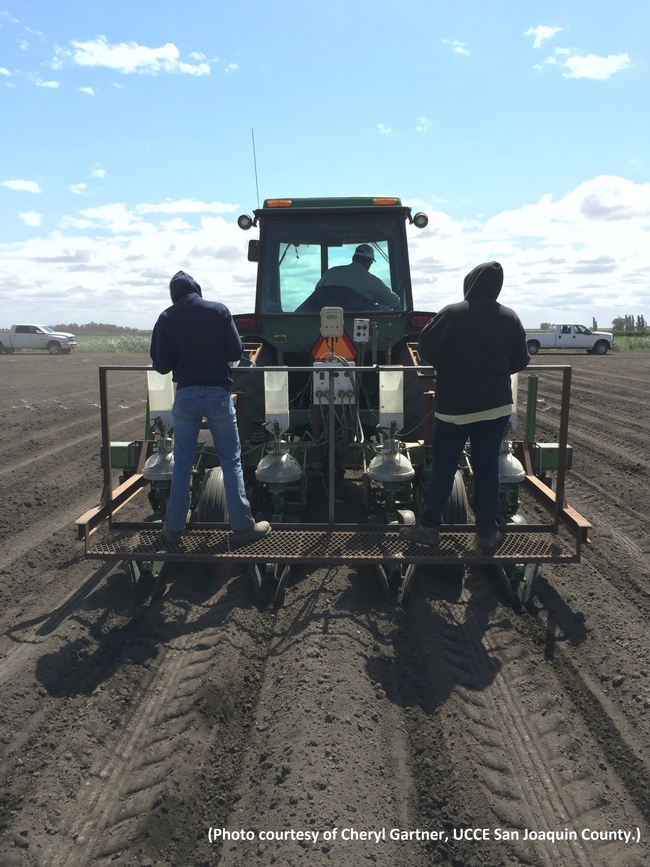On May 20th, we planted a grain sorghum seeding rate trial in the Delta to determine an optimum seeding rate for the unique Delta growing environment. Sorghum is a relatively new crop in the northern San Joaquin Valley and Delta region. The most recent crop reports available from the San Joaquin and Sacramento County Agricultural Commissioners' offices (2014) do not specifically name sorghum in their lists of field crops, indicating that it has not been widely planted. Anecdotally, however, I have heard that acreage is up this year as growers diversify their crop portfolios during this time of low commodity prices.
UC research on sorghum has increased over the last few years, primarily in the southern San Joaquin Valley, under the direction of Jeff Dahlberg, Director of the Kearney Research and Extension Center, and Bob Hutmacher, Director of the West Side Research and Extension Center. They have been investigating grain and silage sorghum for its adaptability under drought and low-input conditions.
Sorghum grows well in environments where corn is grown, and it has similar growth habits as corn. A grower would prepare seedbeds similarly for both crops; the vegetative appearance is similar, as is fertility management. There are, however, some differences in growth and environmental requirements between the two crops. Sorghum should not be planted in cold soils, and typically growers should wait to plant sorghum until the soil temperature is at least 60°F. Anecdotally, growers in this area are finishing up corn planting and then moving on to planting sorghum to allow the soils to warm. Unlike corn, sorghum tillers, and the head is a panicle of grain that is self-pollinated. The panicles develop over a period of several days, and thus, short periods of hot weather are less likely to damage sorghum pollination as it may with corn.
In our trial, we planted Eureka Seeds variety 3292, which is a white sorghum variety being grown for grain. We planted on 30-inch row spacing and about 2 inches deep. The variety label specifies 16,000 seeds per pound with 85 percent germination. The grower's practice will be to plant 12 pounds of seed per acre, based on seed representative and neighboring grower recommendations. Our trial is a randomized complete blocks design with four replicated blocks of five treatments: 5, 6, 9, 12, and 15 pounds per acre. These treatments correspond to approximate plant populations of 68,000, 81,600, 122,400, 163,200, and 204,000 plants per acre, respectively. (This takes into account the 85 percent germination.) Over the course of the season, we will evaluate the trial for stand establishment, weed pressure, and yield in an effort to determine optimum seeding rate.